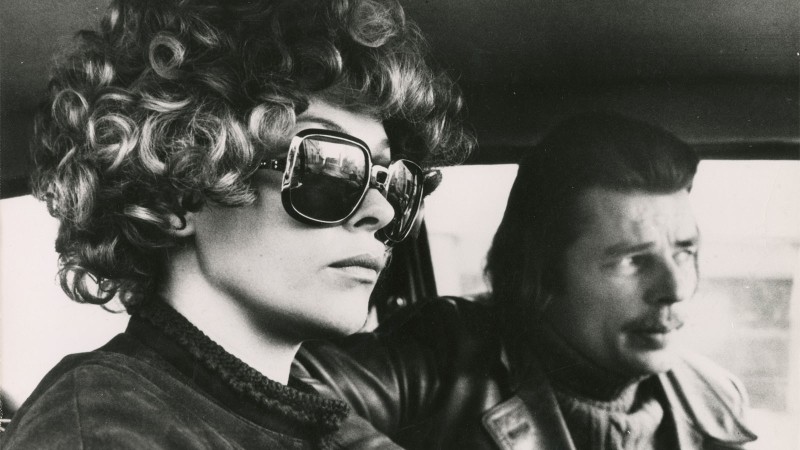Uncertain Futures

This week’s round of tips for weekend reading, the first since the holiday break, begins with a second recommendation for Malte Hagener and Annie van den Oever’s outstanding interview with renowned film historian Tom Gunning in the new NECSUS Journal. Remembering the late Michael Snow, I passed along Gunning’s story about his first encounters with Wavelength (1967), but the wide-ranging and truly engaging conversation covers much more ground as well.
- Gunning also talks about studying under the influential and intimidating art and film critic Annette Michelson, filmmaker and archivist Jay Leyda’s salvaging of Sergei Eisenstein’s doodles on “Stalinist toilet paper,” the importance of writing with clarity, and the necessity of reviving a dialogue “between empirical film historians and film theorists.” The conversation eventually turns to the future. “No question,” says Gunning, “there are ways that I regret the demise of the projected 35 mm image. There are things that were rich about it that I really value. At the same time, I also value the enormous range of things available now and the different contexts in which images are flooded. You know, they are our environment now. What does that mean? Like anything, it has dystopian possibilities, but it also has utopian possibilities. And the thing is, it’s important to keep track of both. And I do mean both.”
- At the height of the Cold War, when the prospect of mutually assured destruction was all too real, films such as Ingmar Bergman’s Winter Light (1963) and Sidney Lumet’s Fail Safe (1964) brought the constant hum of terror in the back of most minds to the fore. In the 1990s, that fear dissipated, but nuclear sabers are rattling again. As Nicholas Russell points out in the Baffler, cinema has not yet caught up. One of the few exceptions is David Lynch’s Twin Peaks: The Return (2017), which “brings a visceral horror to nuclear weapons not seen in decades,” writes Russell. “Most filmmakers, though, have been perfectly content with denial—diminishing the threat of nuclear holocaust by representing it as absurd, improbable, frivolous, or easily avoided should the appropriately skilled superhero or spy be on hand.”
- One of the most pleasurable reads to appear over the holidays is Beatrice Loayza’s appreciation of the late Jean-Louis Trintignant in the Metrograph Journal. “A postwar star of primarily French and Italian films who racked up over 100 credits before his death this year at ninety-one, the industrious actor was displacement personified, a plausible sicko who blended into the crowd,” writes Loayza. “His look—attractive in a bureaucratic way—and his air of propriety complicated his characters’ often fraught desires, which deepened in flavor, in texture, behind the curtain of his reserve.” With Trintignant, “it takes a while to see who you’re really looking at.” He “was of average height and build, and his beauty did not dazzle so much as it took one by surprise. He was hot, but in a discreet way—a secret between you and him.”
- On New Year’s Day, Lies Lanckman launched a site dedicated to Norma Shearer, whose acting career began in the silent era and soared during the pre-Code years with such films as Robert Z. Leonard’s The Divorcee (1930) and Clarence Brown’s A Free Soul (1931). Shearer took a break following the death of her husband, Irving Thalberg, but returned to acclaim and fame with winning performances in W. S. Van Dyke’s Marie Antoinette (1938) and George Cukor’s The Women (1939). “I am, academically, very much a Star Studies Person, in that I’m more interested in what stars meant and represented than in who or what they really were,” writes Lanckman. Her work on Shearer “has focused mostly on the ways in which she embodied both domesticity and modernity through her pre-Code movies, and through the way she was represented in fan magazines while she was making these movies.”
- As the last of the best-of-2022 lists trickle in, awards season is about to enter its hot phase. The Golden Globes will be presented on Tuesday, followed by the Critics’ Choice Awards on January 15, the BAFTAs on February 19, the Independent Spirit Awards on March 4, and the Oscars on March 12. Even if you’re not tracking each and every horse race, one feature worth your while is Filmmaker’s collection of interviews with the season’s “most exciting below-the-line artists,” including editor Paul Rogers (Everything Everywhere All at Once), production designer Rick Carter (The Fabelmans), and composer Hildur Guðnadóttir (Women Talking).



